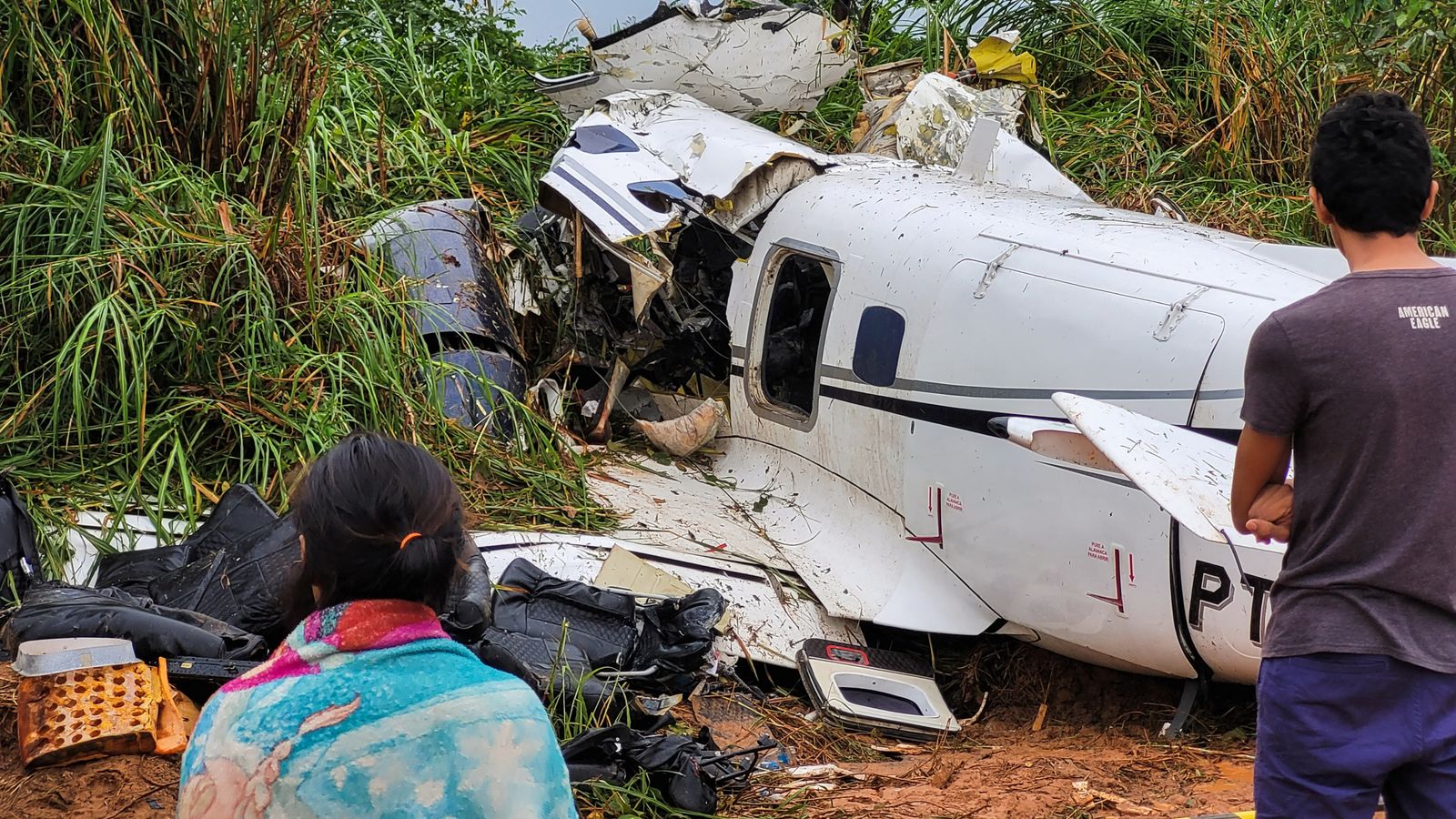Historical Overview of Plane Crashes in Brazil: Plane In Brazil Crash

Brazil, with its vast geographical expanse and thriving aviation industry, has unfortunately witnessed its share of tragic plane crashes throughout history. These incidents have left an indelible mark on the nation, prompting a continuous quest for improved aviation safety measures and a deeper understanding of the contributing factors.
Timeline of Significant Plane Crashes
The history of plane crashes in Brazil is marked by several significant incidents that have shaped aviation safety regulations and public perception.
- 1946: Cruzeiro do Sul Flight 104: This tragic crash near the Azores Islands, claiming the lives of 24 people, including renowned Brazilian journalist and writer, Carlos Drummond de Andrade, highlighted the need for improved navigation and communication systems.
- 1961: Varig Flight 837: The crash of this Douglas DC-8 near Rio de Janeiro, resulting in the death of 64 passengers, led to stricter maintenance regulations and crew training standards.
- 1973: Varig Flight 820: This incident, involving a Boeing 707, resulted in 134 fatalities after a fire erupted on board while the aircraft was approaching Paris. The incident spurred investigations into fire safety protocols and emergency procedures.
- 1982: Vasp Flight 168: The crash of this Boeing 737 near São Paulo, killing 137 people, led to a renewed focus on pilot training and air traffic control systems.
- 1989: TAM Airlines Flight 402: This tragic incident involving a Fokker F-27, which crashed in São Paulo, killing 92 people, raised concerns about pilot fatigue and the importance of proper flight planning.
- 2006: Gol Transportes Aéreos Flight 1907: This mid-air collision over the Amazon rainforest, involving a Boeing 737 and an Embraer Legacy 600, resulted in 154 fatalities. The incident highlighted the need for advanced collision avoidance systems and stricter air traffic control measures.
- 2007: TAM Airlines Flight 3054: This crash of an Airbus A320 during takeoff at São Paulo’s Congonhas Airport, killing 199 people, led to a comprehensive review of airport safety procedures and infrastructure.
Impact on Aviation Safety Regulations and Public Perception, Plane in brazil crash
These incidents have had a profound impact on aviation safety regulations in Brazil. The Brazilian National Civil Aviation Agency (ANAC) has implemented numerous measures to enhance safety, including:
- Stricter Pilot Training and Licensing Requirements: Enhanced training programs and more stringent licensing requirements aim to ensure pilots possess the necessary skills and knowledge to handle various flight scenarios safely.
- Improved Aircraft Maintenance Standards: Rigorous maintenance schedules and inspections are in place to ensure the airworthiness of aircraft and minimize the risk of mechanical failures.
- Advanced Air Traffic Control Systems: Investments in advanced technology have improved air traffic management, reducing the likelihood of collisions and other incidents.
- Enhanced Safety Protocols and Procedures: Stringent safety protocols and procedures have been implemented for all aspects of aviation operations, from pre-flight inspections to emergency response.
These incidents have also significantly impacted public perception of air travel in Brazil. While the Brazilian aviation industry has made significant strides in safety, the memory of these tragedies remains etched in the collective consciousness. This has led to heightened public awareness of aviation safety and a greater demand for transparency and accountability from aviation authorities.
Common Causes of Plane Crashes in Brazil
The causes of plane crashes in Brazil, like those in other parts of the world, are often complex and multifaceted. However, some common factors contribute to these incidents:
- Pilot Error: Human error, including misjudgments, fatigue, and inadequate training, is often a contributing factor to crashes.
- Mechanical Failure: Faulty aircraft components or inadequate maintenance can lead to catastrophic failures during flight.
- Weather Conditions: Severe weather events, such as thunderstorms, turbulence, and fog, can pose significant challenges for pilots and contribute to accidents.
- Air Traffic Control Issues: Miscommunication or errors in air traffic control can lead to collisions or other incidents.
- Security Breaches: Sabotage or acts of terrorism can result in devastating consequences.
It is crucial to note that the causes of plane crashes are often a combination of multiple factors, and investigating these incidents requires a thorough analysis of all contributing elements.
Plane in brazil crash – Imagine the vast skies above Brazil, a beautiful sight, but sometimes a tragic one. Plane crashes in Brazil, sadly, have happened throughout history. You can learn more about this unfortunate history here , which sheds light on the many events that have marked Brazil’s aviation history.
It’s a sad thing to hear about a plane crash in Brazil, but it’s important to understand the different types of crashes that can happen. You can learn more about the different types of crashes in Brazil by reading this article about brazil plane crash type.
Hopefully, by understanding these different types, we can work to prevent them in the future and keep everyone safe.
